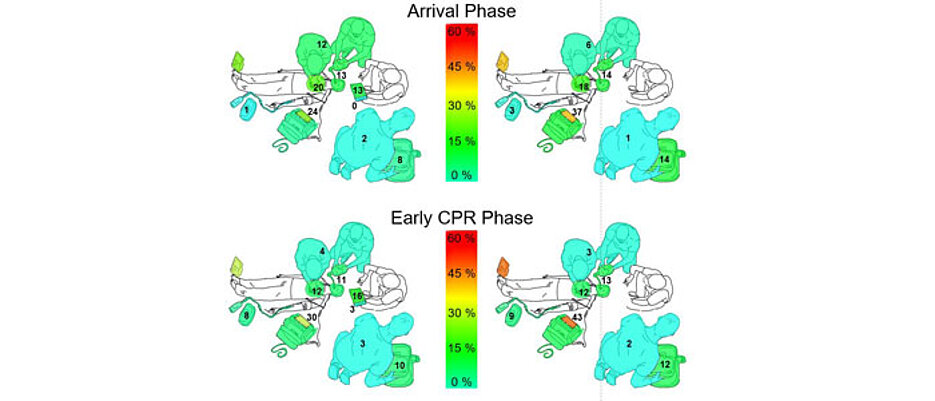Neuer PsyErgo Artikel in Human Factors über die Beeinflussung von visueller Aufmerksamkeitsverteilung durch eine Cognitive Aid App während Reanimationen!
11.01.2022Tobias Grundgeiger und Annabell Michalek vom Lehrstuhl Psychologische Ergonomie und Felix Hahn, Patrick Meybohm, Thomas Wurmb und Oliver Happel aus der Klinik und Poliklinik für Anästhesiologie, Intensivmedizin, Notfallmedizin und Schmerztherapie des Universitätsklinikum Würzburg haben einen Artikel mit dem Titel Guiding Attention via a Cognitive Aid During a Simulated In-Hospital Cardiac Arrest Scenario: A Salience Effort Expectancy Value Model Analysis in der Zeitschrift Human Factors veröffentlicht.
Objective: To investigate the effect of a cognitive aid on the visual attention distribution of the operator using the Salience Effort Expectancy Value (SEEV) model.
Background: Cognitive aids aim to support an operator during the execution of a task. The effect of cognitive aids on performance is frequently evaluated but whether a cognitive aid improved, for example, attention distribution has not been considered.
Method: We built the Expectancy Value (EV)model version which can be considered to indicate optimal attention distribution for a given event. We analyzed the eye tracking data of emergency physicians while using a cognitive aid application versus no application during a simulated in-hospital cardiac arrest scenario.
Results: The EV model could fit the attention distribution in such a simulated emergency situation. Partially supporting our hypothesis, the cognitive aid application group showed a significantly better EV model fit than the no application group in the first phases of the event, but a worse fit in the last phase.
Conclusion: We demonstrated that a cognitive aid affected attention distribution and that the SEEV model provides the means of capturing these effects. We suggest that the aid supported and improved visual attention distribution in the stressful first phases of a cardiopulmonary resuscitation but may have focused attention on objects that are relevant for lower priority goals in the last phase.
Application: The SEEV model can provide insights into expected and unexpected effects of cognitive aids on visual attention distribution and may help to design better artifacts.
Grundgeiger, T., Michalek, A., Hahn, F., Wurmb, T., Meybohm, P., & Happel, O. (2022). Guiding attention via a cognitive aid during a simulated in-hospital cardiac arrest scenario: a SEEV model analysis. Human Factors. doi:10.1177/00187208211060586
Zurück



